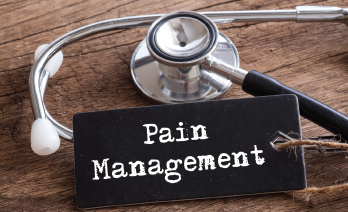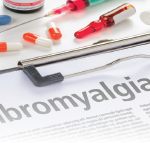
Lemau Studio / shutterstock.com
SNOWMASS VILLAGE, COLO.—The science underlying the neurobiology of chronic pain isn’t something rheumatologists often think about. However, pain is an important reason why patients see a rheumatologist. At the 2020 ACR Winter Symposium in January, Leslie Crofford, MD, gave two presentations addressing pain experienced by rheumatology patients, including a session on the fundamental mechanisms of pain and a discussion of pain associated with fibromyalgia.
Dr. Crofford is the Wilson Family Chair in Medicine, professor of medicine and pathology, microbiology and immunology, and chief of rheumatology at Vanderbilt University Medical Center, Nashville, Tenn. She has investigated pain mechanisms as part of her research on the systemic effects of inflammatory arthritis and the effects of central pain causing such conditions as fibromyalgia.
“It’s so important for rheumatologists to understand the different pathways involved in pain transmission, because we will be better prepared to accurately distinguish inflammatory versus central mechanisms of pain and prescribe the right treatment,” Dr. Crofford said.
Different Mechanisms for Pain
The source of pain in the body dictates where and how a patient experiences pain. During her session on different mechanisms of pain, Dr. Crofford explained the two primary pain mechanisms—peripheral and central.
Peripheral pain is initiated from a peripheral stimulus through the body’s nociceptors, such as skin, muscle, tendon or synovium, from which that pain signal is transmitted by primary afferent neurons to the dorsal root ganglion. From this point, the pain signal is transmitted to the spinal cord, then to projection neurons in higher centers within the brain.
When a nociceptor is repeatedly stimulated, sensitization occurs. This sensitization is defined as an “increased responsiveness and reduced threshold of nociceptive neurons in the periphery to the stimulation of their receptive fields,” Dr. Crofford said. Peripheral sensitization is often seen in conditions with chronic inflammation or joint damage, as in rheumatoid arthritis or osteoarthritis.
Central pain, caused by central sensitization, results from “increased responsiveness of nociceptive neurons in the central nervous system to their normal or subthreshold afferent input,” she explained. This neuron-mediated phenomenon causes neurons in the spinal cord to become more excitable, leading to a decreased pain threshold to noxious stimuli, an enhanced response to non-noxious stimuli or an increase in spontaneous nerve activity, resulting in such conditions as fibromyalgia.
Clinical Characteristics of Pain
With a clear understanding of peripheral and central pain mechanisms, a rheumatologist can ask a patient how they are experiencing their pain to better determine underlying causes and potential treatment approaches. Examples: If a patient describes their pain as difficult to localize or moving around different locations, this is likely the result of central pain and may be accompanied by somatic symptoms, such as fatigue, cognitive difficulties, depression and anxiety.

